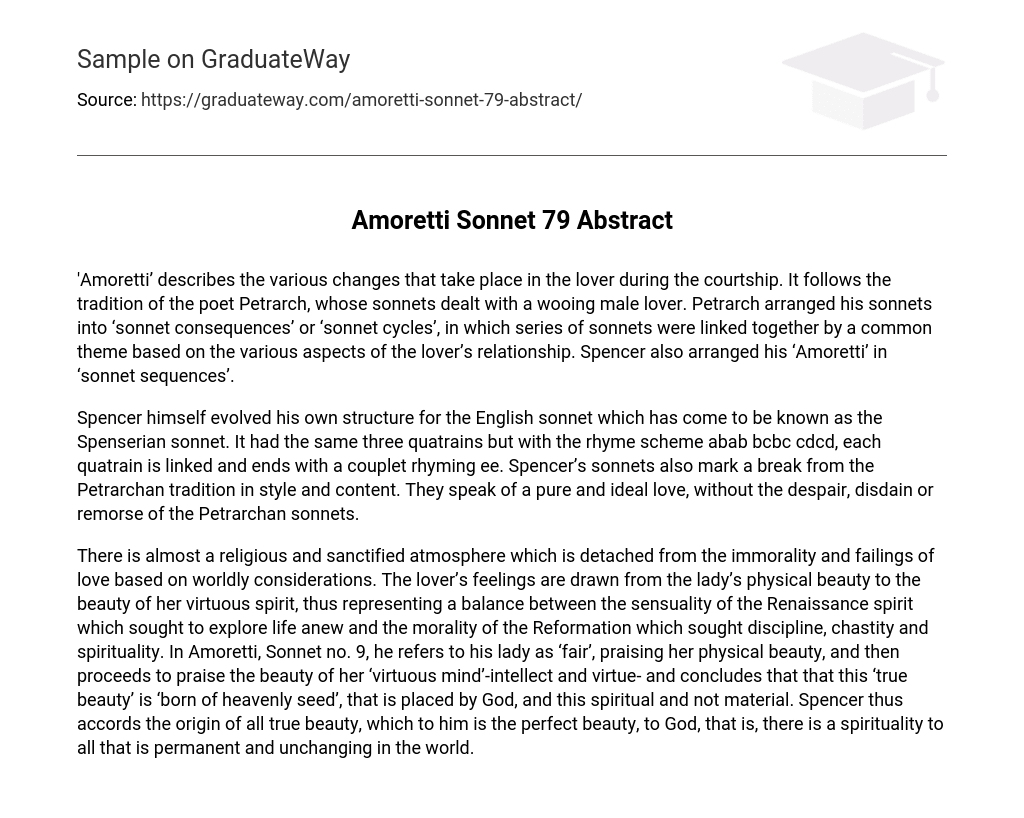‘Amoretti’ describes the various changes that take place in the lover during the courtship. It follows the tradition of the poet Petrarch, whose sonnets dealt with a wooing male lover. Petrarch arranged his sonnets into ‘sonnet consequences’ or ‘sonnet cycles’, in which series of sonnets were linked together by a common theme based on the various aspects of the lover’s relationship. Spencer also arranged his ‘Amoretti’ in ‘sonnet sequences’.
Spencer himself evolved his own structure for the English sonnet which has come to be known as the Spenserian sonnet. It had the same three quatrains but with the rhyme scheme abab bcbc cdcd, each quatrain is linked and ends with a couplet rhyming ee. Spencer’s sonnets also mark a break from the Petrarchan tradition in style and content. They speak of a pure and ideal love, without the despair, disdain or remorse of the Petrarchan sonnets.
There is almost a religious and sanctified atmosphere which is detached from the immorality and failings of love based on worldly considerations. The lover’s feelings are drawn from the lady’s physical beauty to the beauty of her virtuous spirit, thus representing a balance between the sensuality of the Renaissance spirit which sought to explore life anew and the morality of the Reformation which sought discipline, chastity and spirituality. In Amoretti, Sonnet no. 9, he refers to his lady as ‘fair’, praising her physical beauty, and then proceeds to praise the beauty of her ‘virtuous mind’-intellect and virtue- and concludes that that this ‘true beauty’ is ‘born of heavenly seed’, that is placed by God, and this spiritual and not material. Spencer thus accords the origin of all true beauty, which to him is the perfect beauty, to God, that is, there is a spirituality to all that is permanent and unchanging in the world.





